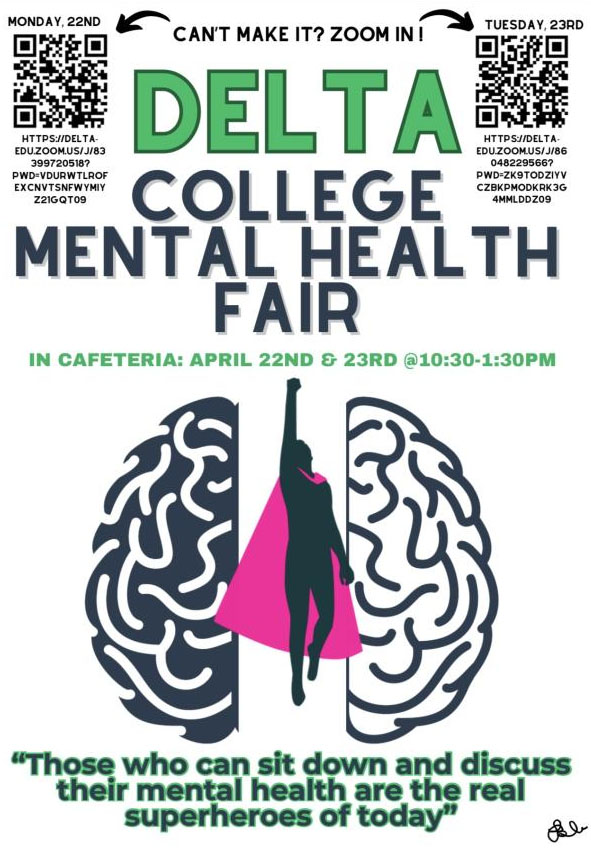By Vanessa Selle
SAGINAW- In 2020, 45,979 people lost their lives to suicide in the U.S. 1,444 were in Michigan. Suicide rates were up by 3% in 2021, and suicide is currently the second leading cause of death in young people.
The Barb Smith Suicide Resource and Response Network held a Suicide Awareness and Training Seminar, Creating a Safety Net in Our Community, at the Anderson Enrichment Center in Saginaw on Nov. 2, 2022. The presentation was sponsored by Team One Credit Union and was attended by about 20 people. Barb Smith did the presentation herself and provided many tools and resources for those looking to help loved ones.
The event attendees learned how to recognize suicidal thoughts, ask sensitive questions safely and comfortably and connect people to the appropriate resources, among other skills.
Smith talked about changing the language surrounding suicide to make it easier to talk about. Switching “committed” to “died by” and changing how we ask someone about their suicidal thoughts can make a huge difference. “Listen twice as much as you speak,” said Smith. Leading with examples of why you think someone may have suicidal thoughts and listening to understand rather than respond shows someone that you have noticed them and that you genuinely care for them and want to help.
The seminar also taught that sending someone straight to the ER or therapist might not be what they need. This is why talking and listening to them is so important. Maybe they feel this way because their financial situation is taking a nosedive. Consider helping them find a financial advisor that can help with their struggle.
Smith went through the “CPR of suicide;” ask, listen, get help. These steps help the person feel noticed, understood, and connected to the proper resources to help them. Thank them for trusting you, and stay with them throughout this CPR process. Keep them safe as best you can: remove any lethal weapons and do not leave them alone. If you cannot be with them, call someone who can. Ask them who they would like to be with and where they would like to be. Please ensure they get the help they need, and most importantly, take them seriously.
“Any attempt, any behavior.” Smith reiterated that when someone shows symptoms of suicidal thoughts or actions, they need to be taken seriously. They are not attention-seeking; they are connection-seeking.
Smith also talked about suicide being a response, not a choice. “My illogical, their logical,” she said while she talked about the brain chemistry behind suicidal thoughts and depression. Your perception is your reality, and that perception is altered with depression and other mental illnesses. You see and process things differently than other people.

The awareness seminar ended with Smith sharing multiple resources. Apps such as Sanvello and Virtual Hope Box help keep people in tune with their thoughts and mindset and give them resources and tools throughout the day. Websites, phone numbers, text lines, and organizations were also part of the many resources shared.
Barb Smith has been working for 34 years, statewide and nationally, to prevent suicide through education. The Governor appointed her to the Michigan Suicide Prevention Commission and the Michigan Department of Health and Human Services as the lead of the suicide postvention team across the state. The Network has various tools and training for people to help understand and prevent suicide, resources for those who may be suicidal or struggling with mental illness, and resources for those who have lost loved ones to suicide.
The Barb Smith Suicide Resource and Response Network was founded in 1989 by Barb Smith, who lost her 20-year-old brother John to suicide. This network focuses on training with the hope of destigmatizing suicide, increasing behaviors to seek help, and caring for those impacted by suicide.
Training includes Applied Suicide Intervention Skills Training (ASIST), a two-day interactive workshop that teaches how to prevent suicide by recognizing signs, providing skilled intervention, and developing a safety plan; and safeTALK, a half-day event that teaches how to prevent suicide by recognizing signs, engaging someone, and connecting them to an intervention resource for support.
For more information or to contact Barb Smith, visit srrn.net.



